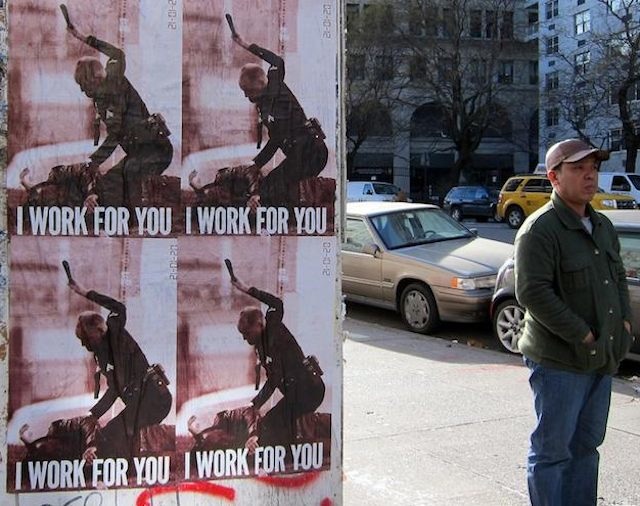NYPD program patrols inside private buildings; Targets Non-whites
/
"Operation Clean Halls" would never exist in a white neighborhood. And most white folks probably see nothing wrong with it and consider the unlawful search & seizures of non-whites to be normal - such is the nature of the operating system of white supremacy.
Similarly, during Nazi Germany, a substantial part of the population had to be ready to consider it desirable, acceptable or unavoidable that certain "other" people would be isolated, persecuted and killed. [MORE] Various movement regulations and identification measures were undertaken by the Government as preconditions to genocide. As the number of Jews or more specifically, semites (non-white people) rose in Nazi Germany, Jews felt the effects of many decrees and regulations that restricted all aspects of their public and private lives.
From [HERE] and [HERE] New York Police Department officers are patrolling inside private apartment buildings in a program known as Operation Clean Halls. The program has been lauded by some residents who say they feel safer but vilified by others who say they're being harassed at home. Many complain they're illegally stopped and arrested. More than two dozen people who say they were wrongly stopped have filed a federal lawsuit.
The lawsuit is one of three pending federal cases that involve the New York Police Department’s stop, question and frisk practice, championed by police Commissioner Raymond Kelly and Mayor Michael Bloomberg - who are both white.
The program is the only one like it in a major U.S. city. It started in the 1990s, when crime was at all-time highs. Now, there are more than 3,000 buildings around the city enrolled, mostly in "higher-crime areas." To enroll, a building owner or manager signs paperwork allowing police to enter and arrest people found to be committing crimes. It gives police standing permission to roam the halls of private buildings.
Edifices citywide are dotted with small white square signs alerting residents that their homes are patrolled by police. Some are huge complexes, others are small brownstones. Officers have conducted hundreds of thousands of patrols up and down stairwells and even more outside. The NYPD claims they catch drug transactions, shoo away loiterers and break up fights. But really, they seem to just round up Black & Brown people.

Last year, New York police stopped 533,042 people, more than five times the number in 2002. Fifty-five percent of those stopped were black, 32 percent were Hispanic and 10 percent were white. In other words, 90% were non-white. According to U.S. Census figures, there are 8.2 million people in the city: 26 percent are black, 28 percent are Hispanic and 44 percent are white. [MORE
The Clean Halls lawsuit was filed by the New York Civil Liberties Union and Bronx Defenders on behalf of Ligon and others who live in South Bronx apartment buildings enrolled in the program.
A plaintiff in the suit, Abdullah Turner, who’s black, said he was waiting for a friend who was returning a sweater inside a Bronx building when an officer slapped his cellphone out of his hand and demanded to know what he was doing outside. Turner, 25, said he was arrested on a trespassing charge, which was dropped nearly six months later.
“I never thought anything bad about police growing up, until I got older,” said Turner, who recently got a GED and is in a work training program. “I guess my age and my race played a part in now putting me on their radar, rather than being my father’s son.”
The trespass charge on which Turner was arrested is among the most common in the city. Last year there were about 8,700 arrests on it, and the year before there were more than 9,200. About a thousand of last year’s cases have been dismissed, and more than 2,100 from the year before were dismissed in some form, according to statistics from the state Division of Criminal Justice Services.
“We don’t feel safe, but it’s because of the police,” said Jaenean Ligon, one of the plaintiffs, who said her sons have been wrongly arrested.































































































































































































































































































